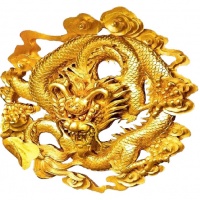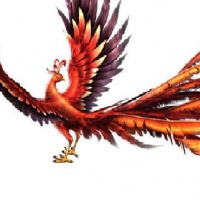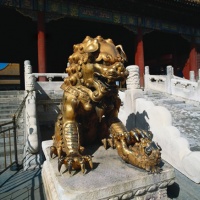- Home Page
- Fact Tours
Our sample tour itineraries of China and China travel packages are sorted by theme and available at competitive prices, you can browse what tours are right for you for your trip to China.
Popular China Tour Packages

Custom Tour Packages to China and Ask Our Experts for Free Enquiry !
- Coach Tours
- Destinations
Beijing, the capital of China. Its art treasures and universities have long made it a center of culture and art in China.
Beijing Top Attractions
Beijing City Tours
Best China Tours with Beijing
Shanghai, the cultural and economic center of East Asia. It renowned for its historical landmarks, the extensive and growing skyline.
Shanghai Top Attractions
Shanghai City Tours
Best China Tours with Shanghai
Xi'an, having held the position under several of the most important dynasties. It is the top destination to explore the facts of Chinese history.
Xi'an Top Attractions
Xi'an City Tours
Best China Tours with Xi'an
Huangshan boasts its culture, beautiful rivers, villages and mountains. It's home to 2 UNESCO World Heritage Sites and the Mecca of photographers.
Huangshan Top Attractions
Huangshan City Tours
Best China Tours with Huangshan
Sichuan is the cradle of the Shu culture, panda, mahjong, teahouse and spicy food. The province ranks first in China by number of UNESCO World Heritage Sites. It is called "the Heaven of Abundance".
Sichuan Top Attractions
Sichuan Tour Packages
Best China Tours with Sichuan
Yunnan, literally means the south of colorful clouds, due to its beautiful landscapes, mild climate and diverse ethnic cultures and traditions, is one of China's major tourist destinations.
Yunnan Top Attractions
Tibet, the nearest land to the sky, is known for its breathtaking landscape, splendid culture, art, buildings, and mysterious religions.
Tibet Top Attractions
Tibet Tour Packages
Best China Tours with Tibet
Explore the lost civilizations by riding a camel! Travel across the Gobi and the desert, and over the high mountains. Our Silk Road tours including different sections of the Silk Road in China.
Silk Road Top Attractions
Silk Road Tour Packages
Best China Tours with Silk Road
Guilin, an internationally-known historical and cultural city, has long been renowned for its unique karst scenery. Its vicinities are the paradise of hiking, caving, rafting, biking and countryside exploring.
Guilin Top Attractions
- China Facts
- China Hotels
- Travel Photos
Culture & Symbol
- China Giant Panda
- The Four Great Inventions of Ancient China
- Chinese Medicine
- Ornamental Pillar
- Traditional Chinese Medicine (TCM)
- Sacred Animals
- China Great Mountains and Rivers
- Chinese Knot
- Carapace-Bone-Scripts
- Buildings
- Chinese Philosophy
- Chinese Name Culture
- Chinese Literature
- Chinese Language
- FUWA Memorabilia
- Chinese Fengshui Theory
- Chinese Cultural Understanding
- Chinese Astrology & Horoscope
Sacred Animals
Dragon
The dragon is commonly called Lóng in China. As a primitive totem of the Chinese people it can date back to the Neolithic period. This sacred animal in the ancient Chinese legend, it is referred to as the divine mythical creature that brings with it ultimate abundance, prosperity and good fortune. Its benevolence signifies greatness, goodness and blessing; it symbolizes excellence, valiancy and boldness, heroism, perseverance, nobility and divinity.
 Actually, the Chinese dragon is an imaginative combination from different parts of the animals. For example, its horns are from the deer, head from the buffalo, noses and teeth from the lion, palps from the shrimp, body from the snake, scales and tail from the fish, and claws from the eagle etc. This creature can run, fly and swim, even stir up the clouds and bring rain to the people if they pray it for. According to the Chinese legends, the dragons live in the heaven, the rivers, the wells, lakes and the seas. They usually hide not appear at random, they fly to the heaven in spring and hide in the water in fall.
Actually, the Chinese dragon is an imaginative combination from different parts of the animals. For example, its horns are from the deer, head from the buffalo, noses and teeth from the lion, palps from the shrimp, body from the snake, scales and tail from the fish, and claws from the eagle etc. This creature can run, fly and swim, even stir up the clouds and bring rain to the people if they pray it for. According to the Chinese legends, the dragons live in the heaven, the rivers, the wells, lakes and the seas. They usually hide not appear at random, they fly to the heaven in spring and hide in the water in fall.
Nine Dragon Screen (Nine Dragon Wall) in Beijing Forbidden City
In China, the dragon permeates through the great Chinese civilization because the people have special worship to the dragon. In the old dynasties, the dragon was the emblem of the emperor and the imperial power. It was referred to something about the emperor, such as, the royal court was called dragon court, the imperial robe was called dragon robe, the son of the emperor was call dragon son, the face of the emperor was called dragon face, emperor's head was called dragon head...very interesting; dragon ranks the fifth among the twelve animals in the animal Chinese birth year; this animal is considered celestial in China, numerous dragon shrines and altars are set up across the country; the images of dragon are usually seen in the Chinese lanterns, the dragon boats, bridges, temples, the emperors' clothes and equipages, and royal buildings etc; there are many current idioms and literary quotations are related to the dragon in China; some Chinese people even take the character of dragon ( 龙 Lóng) as their family name; nearly all the Chinese parents hope their sons become dragons (means become a useful person) when they grow up and possess the energetic, decisive, optimistic, intelligent and ambitious like the dragon.
Dragon has been comparable as the symbol of the Chinese nationality itself from time immemorial. Currently, the Chinese people around the world proudly proclaim themselves the "Descendents of the Dragon". But now when people mention the Chinese dragon it is usually associated with China and the Chinese culture.
Usually, the most directly way to know Chinese totem to the dragon is to watch their dragon dance performances during the Spring Festival or visit the Beijing Forbidden City.
Phoenix  Phoenix is a sacred bird in China. In Chinese, the male bird is called feng and the female bird is called huang, and the bird couple is usually called together Fenghuang. As the china dragon, this mystical bird was invented according to the parts of different animals or birds. Its head is from that of the wild goose, chin from the swallow, beak from the chicken, neck from the snake, body from the tortoise, feather from the scale of the dragon, buttocks from the female unicorn, tail from the fish and peacock. In Chinese legends, this bird is secular and known as the king of the birds. It represents the female though it has the male and female.
Phoenix is a sacred bird in China. In Chinese, the male bird is called feng and the female bird is called huang, and the bird couple is usually called together Fenghuang. As the china dragon, this mystical bird was invented according to the parts of different animals or birds. Its head is from that of the wild goose, chin from the swallow, beak from the chicken, neck from the snake, body from the tortoise, feather from the scale of the dragon, buttocks from the female unicorn, tail from the fish and peacock. In Chinese legends, this bird is secular and known as the king of the birds. It represents the female though it has the male and female.
Phoenix is also the symbol of the emperor power in China. It attached to the dragon and used by the queen and concubines of the emperor. This bird is the emblem of wisdom, goodliness, peace, luck and harmony. Therefore, the Chinese parents often pin their hopes on their daughters to become a phoenix.
Today, the images of the phoenix can be found in many Chinese folk arts. This imaginative bird had played a very important role in the ancient Chinese civilization.
 Qilin
Qilin
The Chinese Qilin also spelled Kylin or Kirin, is one of the four sacred animals of ancient China and reversed by the Chinese people. This fictitious animal has moose body, buckhorn, fish scales, buffalo's tail and the horse hoof. In China, Qilin is a good omen that can bring peace and prosperity. It also symbolizes the more children, the more happiness so the ancient legends about the Qilin sending a son to the no-son family are frequently told today China.
The Qilin can be found in many Chinese buildings and paintings. If you have an opportunity to visit the Forbidden City or the Summer Palace you can see its stone or bronze statues. Wonderfully, the traditional paper Qilin dance performances still can be seen in some rural areas during the Spring Festival.
Sacred Tortoise
Sacred tortoise was also called divine tortoise or efficacious tortoise in ancient China. Of the Four Chinese Sacred Animals only the sacred tortoise is real. It is considered the longest lived among the animals and can foretell the future. The Chinese people regard it as the symbol of longevity. In the ancient times, when the great events were held the wizards used to burnt the tortoise shells to judge good or ill luck by the crack.
The sacred tortoise was ever paid great respect in China. Its stone or bronze carvings and statues were found in the ancient royal palaces, emperors' tombs and common people's houses. It symbolizes the age-long of the Chinese empire, the brightness and knowledge.
Lion
Lions are said to be guardians to human in Chinese legends and myths. They guard people's houses and drive away the evil spirits. Lion statues are widely used and very common in China. Today, In some China towns, on TV, or during the traditional Chinese festivals or some great events, you may watch Chinese worship this sacred animal by lion performance dance.
Red-crowned Crane
Red-crowned crane was once the symbol of Chinese in ancient times. In traditional Chinse painting, the painters like this bird very much and frequently draw it on their paper. As early as the Spring & Autumn and the Warring States Periods (772-475 B.C.), the red-crowned crane figures were found in the bronze wares and many sacrificial vessels. In Taoism, this bird stands for longevity and the immortal.
Read more Chinese culture info at See China-Global Chinese Culture
Questions & Comments
Home | About Us | Partnerships | Terms & Conditions | Privacy & Security | Payment Guide | Resource Links| Sitemap
Email: contact@chinafacttours.com, Tel: +86-773-3810160, Fax: (+86) 773-3810333
Copyright © 2008-2022 China Fact Tours. All rights reserved
![]()









